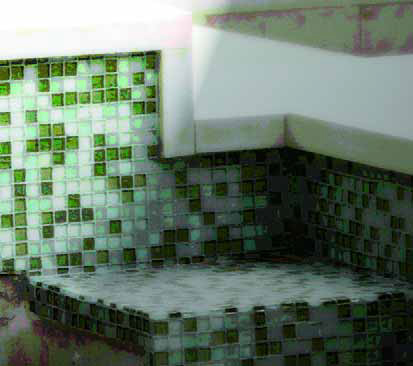engineering
If you've been involved in major construction projects - initial work or renovations - chances are good that you've come across the need for retaining walls. In many cases, even the simple leveling of a site will require some type of retaining structure to hold back the soil - whether you're cutting fill out and need to support the slope that remains or filling an area and need to keep the new material from washing away. No matter what site we're talking about, retaining walls have one purpose: to hold something back. Whether you need to terrace a sloped yard, hold up a parking lot or
It's no secret among those who've been in my segment of the watershaping industry as long as I have that vinyl-liner pools weren't as attractive as their gunite counterparts in the old days: The finishes weren't very interesting, options in colors and patterns were limited, the only type of coping we used was made of aluminum and most liners were only available in rectangular configurations in a limited number of standard sizes. Despite those shortcomings, however, vinyl pools caught on, and in a big way, and I have watched every stage of that development for the more than three decades I've
It's no secret among those who've been in my segment of the watershaping industry as long as I have that vinyl-liner pools weren't as attractive as their gunite counterparts in the old days: The finishes weren't very interesting, options in colors and patterns were limited, the only type of coping we used was made of aluminum and most liners were only available in rectangular configurations in a limited number of standard sizes. Despite those shortcomings, however, vinyl pools caught on, and in a big way, and I have watched every stage of that development for the more than three decades I've
There's something intriguing about heavy objects that float on water. In our daily lives, we often see traditional fountains made with utterly huge pieces of stone, but as gorgeous and compelling as those systems can be, it's the ones in which that stone moves that are the most fascinating of all. The very idea that you can move a massive piece of granite with just the slightest touch of a hand is simply mesmerizing. These floating objects become centerpieces immediately - a fact that has led to their proliferation in plazas and other public spaces around the
There are some things that are better seen than described. In the case of pool and spa equipment, for example, there are situations in which manufacturer instructions or two-dimensional plan drawings simply do not give the installer all the information needed to get things right the first time. As a result - and as everyone who installs equipment sets knows - the plumbing and layout of the equipment usually requires some level of on-site improvisation. In our work of designing hydraulic systems for complex watershapes - everything from commercial pool facilities to interactive waterfeatures and fountains - we've seen the need to find a way to specify precisely how we want our equipment sets to be installed. No two-dimensional plumbing schematic or manufacturer-supplied manual does that part of the job. That is, they do not completely delineate the way
Whether we function as designers or builders or both, we watershapers tend to be flexible folk: We mold ourselves to projects and situations and tasks when we're called on to apply our skills and experience, and this often leads us to perform in unanticipated ways. This sort of adaptability is a way of life for most of us: It's a talent we use to produce success. But even the most adaptable practitioners of the watershaping arts will, every once in a while, encounter a project that shocks the system, alters all formulas and breaks down familiar parameters. In these rare cases, just surviving the process is an accomplishment that brings a sense of relief as well as a sense of amazement that both you and the project made it through to completion. I was recently fortunate enough to be part of just such a project - a fascinating set of challenges now known as the Smithsonian Institution's National Museum of the American Indian in Washington, D.C. It's the last museum that will be
With some details, seeing is believing. That's certainly the case with the one we'll consider in this column, where the images will do much of the work in defining a simple but elegant way of making a statement with any raised bond beam or wall. Yet again, it's testimonial to the good things that happen when watershapers know how to control materials and infuse their work with visual appeal. Most of the time when pool people build small or medium-size walls, they'll automatically be topped with some form of coping or capstone - anything from poured-in-place concrete or stone to brick or some pre-fabricated coping. Many of these walls are
From the grandest waterfall to the smallest courtyard fountain, water flowing over an edge is one of the most compelling of all watershaping “looks.” Whether it’s a vanishing edge or a slot overflow or a trough, runnel or waterfall, these effects all use one common concept – that is, the weir. Simply defined, a weir is a barrier or dam placed in a channel behind which fluid backs up and then falls through a notch and down the face of the weir. In most watershaping applications, water travels over the weir’s edge or brink and into some kind of lower basin, trough or pool. Physically and visually, these systems are driven by




















